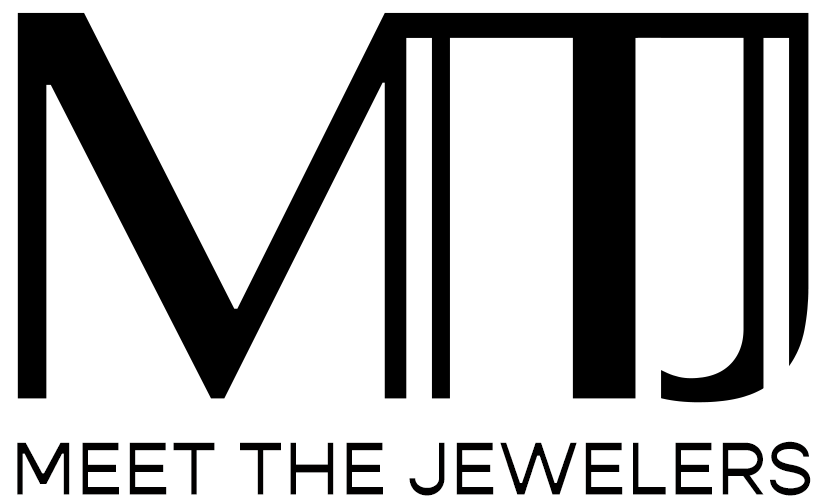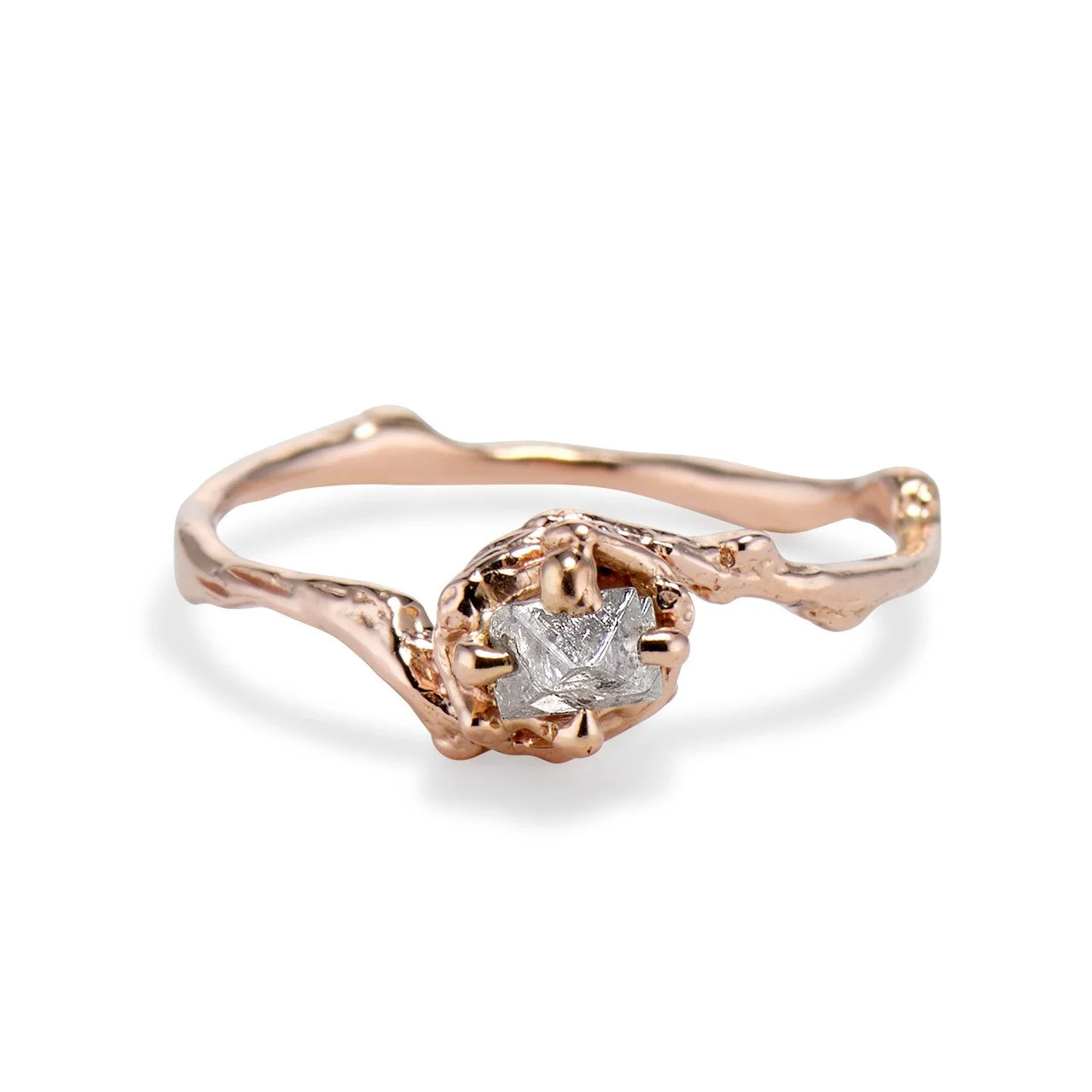3 Diamond Cuts You’ve Probably Never Heard Of
There’s more than meets the eye when it comes to jewelry. Get the big picture with our long-form deep dives into the ever-changing, everlasting jewelry biz.
Photo credit: @toddreedjewelry
Meet raw, slice, and portrait diamonds
A category once dominated by classic, emerald cut solitaires and pillowy, cushion cut stones swirled with a halo of pave diamonds is getting quite the overhaul. Jewelers are designing with new techniques to inspire a modern wave of brides. From rough-cut stones to laser-thin slices, these diamond engagement rings offer “something new” to the 21st century bride still wedded to the tradition of a diamond engagement ring.
Raw Diamonds
Just as their name suggests, raw diamonds are diamonds that haven't been cut or polished. They tend to have a milky quality that serves as a backdrop of the stone’s one-of-a-kind inclusions. Although they don’t have a high shine like a traditionally cut diamond, their vast array of color and tone make these rings incredibly unique.. Raw diamonds are also one of the most difficult diamonds to set due to their asymmetrical shape. Typically, a jeweler will cut and facet a diamond so it is even on both sides and can be mounted with a level of measured precision. The settings for raw diamonds are designed specifically for the individual stone. A true one-of-a-kind.
Diamond Slice
Diamond slice rings are made when a laser cutter edges off a “slice” from a larger natural diamond stone typically full of inclusions. The pattern revealed in the slice is a result of the inclusions in the stone and illustrative of the stone’s formation. One side of the diamond is then faceted to give the diamond a bit of shine, but the real personality is the size and dimension of the inclusions. For diamond slice rings, the more the inclusions, the more expensive. Diamond slice rings are set in a protective bevel style to prevent the stone from breaking or chipping. This style ring tends to be more affordable and is ideal for brides seeking subtle bling.
Portrait Diamond
The portrait diamond is a glass-like diamond that echoes a perfectly still lake. Faceting these stones is extremely complicated and takes a great level of skill due to the thin, fragile nature of the cut. Much like the diamond slice, a portrait diamond has a low profile setting. However, by adding facets or stone steps, these diamonds shine in the light. Once used in ancient India to protect miniature paintings with a hard, glossy covering, portrait diamonds are growing in popularity thanks to celebrity interest. (Rooney Mara’s engagement ring is a portrait diamond!) Portrait diamonds hit the sweet spot between traditional and modern, and though still under that radar, it feels like it’s only a matter of time these delicate beauties hit the mainstream.
Editor: Samantha Durbin Writer: Elissa Velluto
Every item featured is personally selected by our writers and editors (read: we're totally into it). Please know that when you buy through our links, we may earn an affiliate commission (read: we get to keep doing what we love).










